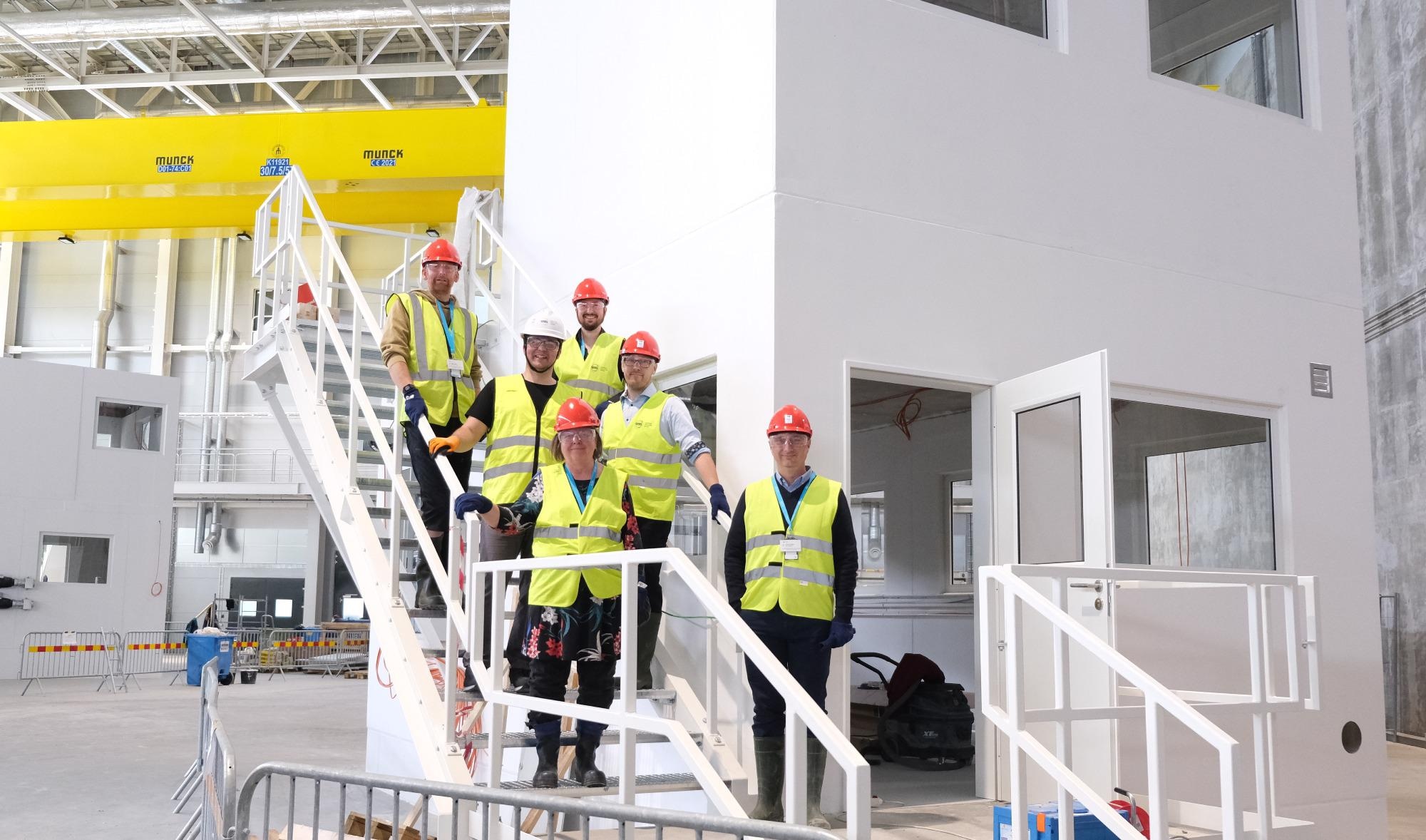Batteries are essential to achieve a fossil-free and climate-neutral society. Solid-state batteries are considered to be the future within battery technology, although further research is necessary. A new international research project will contribute to the realisation of high-energy density solid-state batteries by studying new battery materials through combined neutron and X-ray imaging.
 Some of the researchers of the ANISSA project by the ODIN instrument's control cabin at ESS in Lund, Sweden. Image Credit: Julia Öberg/ESS
Some of the researchers of the ANISSA project by the ODIN instrument's control cabin at ESS in Lund, Sweden. Image Credit: Julia Öberg/ESS
Tomorrow’s sustainable batteries need to store more energy, charge faster and be safer than today’s dominating lithium-ion batteries. Solid state-batteries are also lithium-based, although with a lithium metal anode, and a solid instead of liquid electrolyte. These batteries have the potential to double the storage capacity with improved safety, but there are functional challenges to overcome before industrial production can start.
In the project ANISSA (Advanced Neutron Imaging for Solid-State Batteries in Action), researchers from the Universities of Uppsala and Lund (Sweden) and Münster (Germany), will collaborate with the research facilities Helmholtz-Zentrum Berlin (HZB) and European Spallation Source (ESS) on advanced studies of new battery materials and the optimisation of solid-state batteries.
“I have high expectations for this project, where we, with complementary expertise, are joining forces to develop tools for ESS and for the batteries of the future,” said Kristina Edström, Professor of Inorganic Chemistry at Uppsala University, and co-ordinator of the European Initiative, Battery 2030+.
The four-year long project has been granted a total funding of M€ 1.9 by the Röntgen-Ångström Cluster (RÅC), a German-Swedish research collaboration in materials science that aims to strengthen research at synchrotrons and neutron sources.
ANISSA will combine X-ray and neutron imaging, which are highly complimentary experimental techniques very suitable for battery research, although until recently not often used for this purpose. In battery research, neutron imaging can overcome some limitations with X-ray imaging, primarily due to the high sensitivity to lithium.
“The unique combination of X-ray and neutron tomography provides completely new insights into the relationship between the 3D material structure and 3D-distribution of lithium, allowing us to better understand how exactly the structure of the battery material affects lithium transport and storage,“ said Ingo Manke, Head of Imaging Group at HZB. “This enables the development and improvement of novel materials for solid-state batteries, which are considered one of the most promising battery types of the future.”
ANISSA will enable the study of battery systems under realistic operational conditions. The project will invest in a portable high-resolution X-ray source, that will initially be used for experiments at operating neutron sources, and later on installed at the ESS imaging instrument ODIN. This will allow for early science at ESS, even before the facility starts to deliver neutrons for research.
“Adding an X-ray source to the ODIN instrument will enable ESS to not only push the research boundaries of battery technology, but also in many other fields, such as medical implants, construction materials and cultural heritage,” said Robin Woracek, ESS Instrument Scientist.